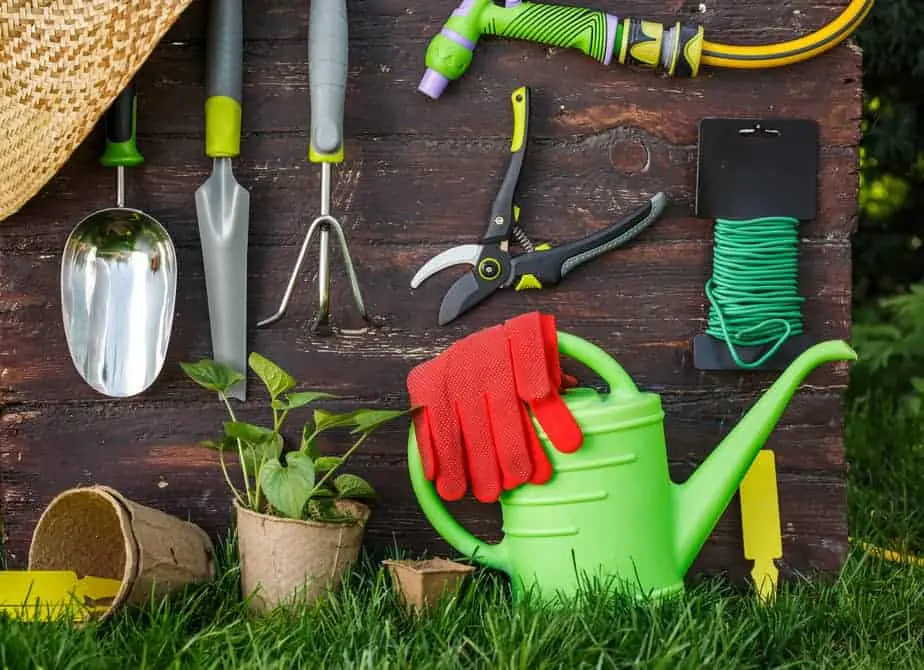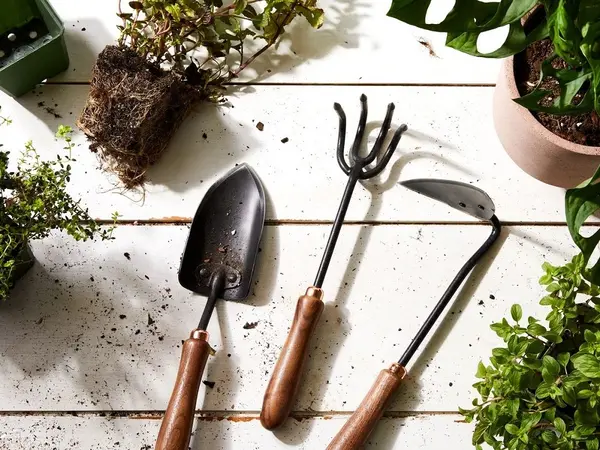Contents
Introduction
Are you noticing your indoor plants looking a bit cramped or struggling to grow? It might be time to give them a fresh start by repotting! Repotting isn’t just about changing the pot; it’s a crucial step in keeping your plants healthy and thriving. Whether you’re a seasoned plant parent or a newbie, repotting can seem a bit daunting. But don’t worry—once you get the hang of it, it’s a straightforward process that can make a huge difference in your plant’s growth and overall well-being.
Why Should You Repot Your Plants?
Think of repotting like giving your plant a new home where it has more space to stretch its roots and grow. Over time, plants can outgrow their pots, and their roots might become cramped or tangled. This can lead to poor growth or even stunted development. By repotting, you’re essentially giving your plant a bit of a makeover—new, fresh soil, more room to grow, and a better environment to flourish.
What Tools Do You Need for Repotting?
To make repotting a breeze, having the right tools at your disposal can make all the difference. But don’t worry, you don’t need a fancy toolkit to get started. The basics are pretty straightforward and can be found at any garden center or online. From choosing the right pot to picking up a trusty trowel, we’ll guide you through the must-have tools that will make the repotting process smoother and more effective.
In this guide, we’ll dive into all the essential tools you’ll need for repotting your indoor plants. We’ll break down each tool, why it’s important, and how to use it. By the end, you’ll feel confident and ready to give your plants the upgrade they deserve. So, roll up your sleeves and let’s get your indoor garden looking its best!
Essential Tools for Repotting
Ready to dive into repotting? Let’s talk about the tools you’ll need to make the job a breeze. Don’t worry—it’s not as complicated as it sounds, and you don’t need a ton of fancy gadgets. With a few key tools, you’ll be well-equipped to give your plants the perfect new home. Here’s a rundown of the essentials:

Pots and Containers
When it comes to repotting, choosing the right pot is a big deal. Think of it like picking out a new pair of shoes for your plant—it needs to fit just right!
- Choosing the Right Size Pot
- First things first, size matters. A pot that’s too small can stunt your plant’s growth, while one that’s too large might lead to overwatering. The goal is to find a pot that’s just a bit bigger than the current one, giving your plant room to grow but not so much that it gets overwhelmed.
- Material Options
- Next up, let’s chat about materials. Pots come in all sorts of options—plastic, ceramic, and terracotta, to name a few. Each type has its own perks. Plastic pots are lightweight and often come with drainage holes, while ceramic and terracotta pots are more decorative and can help with moisture control. Pick what works best for your plant and your space.
Potting Mix
You wouldn’t want to plant your garden in just any old dirt, right? The same goes for indoor plants. Using the right potting mix is crucial for healthy growth.

- Types of Potting Mix
- There are different types of potting mixes out there, and each has its own special qualities. For example, peat-based mixes are great for retaining moisture, while coconut coir is a sustainable option that helps with aeration. Perlite and vermiculite can also be mixed in to improve drainage. Choose the one that fits your plant’s needs!
- Customizing Potting Mix
- Sometimes, you might need to tweak the potting mix a bit to get it just right. Mixing different components can help create the perfect environment for your plant’s roots. We’ll go over how to customize your mix based on the specific needs of your plants.
Trowels and Spades
Let’s get into the tools you’ll use to handle soil and plants. Trowels and spades might not sound exciting, but they’re your best friends when it comes to repotting.
- Trowels
- Trowels are perfect for digging, scooping, and transferring soil. They’re handy for getting into smaller spaces and working around plant roots. With a trowel, you can easily move soil from the bag to the pot without making a mess.
- Spades
- For bigger jobs, like dealing with larger amounts of soil or moving plants with bigger root systems, a spade is your go-to. It’s stronger and more durable, making it easier to handle bulkier tasks.
Pruning Tools
Sometimes, repotting isn’t just about moving your plant to a new pot. It’s also a chance to give it a little trim!

- Pruning Shears
- Pruning shears are great for cutting back overgrown roots and branches. They help keep your plant healthy by removing dead or damaged parts, making space for new growth.
- Root Cutter
- If your plant’s roots are tightly bound or growing in circles, a root cutter can help. It slices through tangled roots, encouraging them to spread out and grow more effectively in their new pot.
Watering Can or Sprayer
Once your plant is in its new pot, it’s time to give it a drink. Here’s how to do it right:
- Watering Can
- A good watering can helps you control the amount of water your plant gets. Look for one with a long spout that makes it easy to water your plant without spilling.
- Sprayer
- For delicate plants that need a little extra TLC, a sprayer can be perfect. It provides a gentle mist that’s great for plants that prefer higher humidity.
Gloves
Last but not least, let’s talk about gloves. They might not be the flashiest tool, but they’re super important!
- Types of Gardening Gloves
- There are various types of gardening gloves to choose from. Some are designed to protect against thorns and sharp tools, while others are made for comfort and grip. Find a pair that suits your needs and keeps your hands clean.
- Benefits of Using Gloves
- Gloves keep your hands safe from soil, chemicals, and any potential cuts or scratches. They also make it easier to handle dirt and tools without getting your hands too dirty.
Additional Tools for Specialized Repotting
Ready to take your repotting skills to the next level? While the basics will get you started, there are some specialized tools that can make repotting even easier, especially if you’re dealing with more finicky plants or specific situations. Here’s a look at some extra tools that might come in handy:
Root Air Pruners
If you’re dealing with a plant that’s gotten a bit too cozy in its pot, root air pruners can be a game-changer.
- Functionality
- These nifty tools help manage root growth by cutting through those tightly packed roots that might be circling around inside the pot. They’re designed to promote healthy root development by encouraging new roots to spread out and explore the fresh soil.
- When to Use
- Root air pruners are especially useful if you notice your plant becoming root-bound or if it’s having trouble growing. They’re great for plants that need a little extra help to get their roots back on track and grow more effectively.
Soil Moisture Meter
Keeping track of soil moisture can be a bit of a guessing game, but a soil moisture meter takes the guesswork out of the equation.
- Purpose and Benefits
- This handy tool measures how wet or dry your soil is, so you know exactly when it’s time to water. It helps prevent overwatering or underwatering, which can be a common problem for indoor plants. With a soil moisture meter, you’ll have a much better idea of your plant’s watering needs.
Plant Support Stakes
Sometimes, after repotting, your plant might need a little extra support to stay upright, especially if it’s tall or top-heavy.
- Types and Uses
- Plant support stakes come in various types, from bamboo sticks to metal cages. These supports help keep your plant stable and can prevent it from falling over or getting damaged. They’re especially useful for taller plants or those with delicate stems that might need a bit of extra help standing tall.
Tips for Using Repotting Tools Effectively
So, you’ve got your tools all set and you’re ready to start repotting. But before you dive in, here are some tips to help you use your tools effectively and get the best results for your plants. With these handy hints, you’ll make repotting easier and more successful.
Tool Maintenance
Keeping your tools in tip-top shape is key to making your repotting process smooth and efficient.
- Cleaning and Storage
- After each use, give your tools a good cleaning to remove soil, sap, and other residues. A quick rinse with water and a scrub with a brush should do the trick. For tools like trowels and shears, make sure they’re completely dry before storing them to prevent rust. Store them in a dry, cool place to keep them in great condition for your next repotting session.
- Regular Inspection
- Check your tools regularly for any signs of wear and tear. Look out for cracks, loose handles, or dull blades. Addressing these issues early can prevent bigger problems down the line and ensure that your tools are always ready for action.
Safety Precautions
Repotting can be a fun and rewarding task, but it’s important to stay safe while you’re at it. Here’s how to keep yourself and your plants safe during the process:
- Handling Tools Safely
- Always use your tools as intended. For example, use pruning shears for cutting, not for digging or prying. When working with sharp tools or heavy soil, handle them with care to avoid accidents. Keep your workspace tidy to reduce the risk of tripping or knocking over items.
- Using Protective Gear
- Wearing protective gear like gloves can save your hands from soil, chemicals, and potential cuts. If you’re working on the ground, consider using knee pads to protect your knees from getting sore. An apron or old clothes can help keep dirt and debris off your clothing.
Conclusion
And there you have it—everything you need to know about repotting tools to keep your indoor plants looking their best! Repotting might seem like a big task, but with the right tools and a bit of know-how, it’s actually a simple and rewarding process.
Recap of Key Tools
We’ve covered all the essentials, from choosing the perfect pot and potting mix to the specialized tools that can make a big difference. Remember, having the right tools, like trowels, pruning shears, and a good watering can, can make repotting easier and more effective. Don’t forget about those handy extras like root air pruners and soil moisture meters—they can really help when you’re dealing with more specific plant needs.
Encouragement for Proper Repotting
Repotting is a fantastic way to give your plants the care they need to thrive. It helps them grow strong and healthy, and it’s a great opportunity to refresh their environment. So, grab those tools, roll up your sleeves, and get ready to give your plants a little TLC. Your indoor garden will thank you with lush, vibrant growth!
With the tips and tools we’ve discussed, you’re all set to tackle repotting like a pro. Happy repotting, and here’s to many more thriving, beautiful plants in your home!



